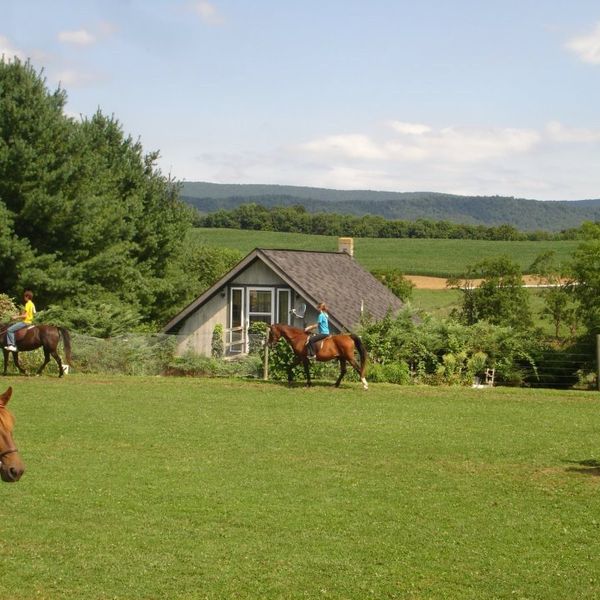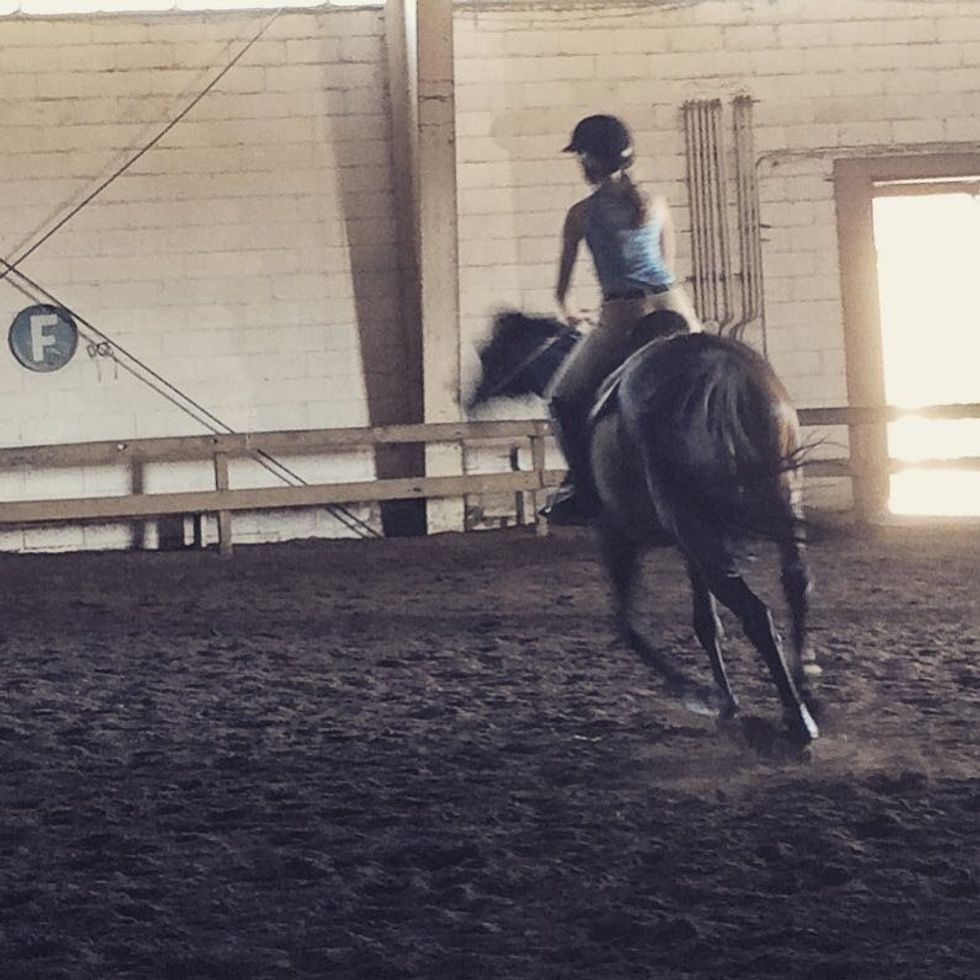I was laying on the ground, the world suddenly a very unsteady place. I could not hear, and soon after that, I could not see. When I was able to hear again, I realized someone was calling 911. A few minutes later, I was bound to a stretcher and loaded into the back of an ambulance.
I answered every question the EMTs asked me. The one question I couldn’t answer, however, was one I kept asking myself. How did I wind up in this position? It wasn’t until months later that I was able to answer that question: I was learning how to fly.
What is the closest to flying that you can get? For me, it is cantering on a horse. It is the moment when we are both suspended in the air as all four of the horse’s hooves come off the ground, a steady up-down rhythm that is downright exhilarating. Learning to fly so high, however, also comes with the risk of falling. When I fell that morning, it was my first attempt at a canter. I had my horse picking up speed, but hadn’t quite coaxed him into the stride. All of a sudden, he began to run, much faster than a canter was supposed to feel. My feet came out of the stirrups and I somehow lost my reins. It was only a matter of time before I came out of the saddle, landing hard on the ground. In the emergency room, I was diagnosed with a concussion. About a week later, I found out that I had pushed my hip up and out of alignment. Two months after that, when I still wasn’t walking quite right, I found out I had a fracture.
Getting back in the saddle wasn’t the problem. I was aching to ride again. My teammates were progressing in their riding, sharing milestones they just reached and stories from days spent at the barn. As they improved, I was still limping around campus, unable to walk without being in pain a few strides later. I was tired of being injured and counted down the days until I could be back on a horse.
When I was finally allowed to ride, being in the saddle felt as comfortable as it did before my accident. It was back to basics for a few months, working at the walk and then the trot. However, when it came time for me to canter again, I realized I was far from comfortable. I was borderline horrified knowing that I could be hurt again. I was holding back on every attempt I made in my lessons, hyper-aware of the fact that I was too scared of going faster than I already knew how to.
Falling is only the beginning of learning how to fly. Everyone is going to fall in their quest to reach something they have never felt before. It is how you deal with the consequences of falling that ultimately decides if you are ready to reach these new heights. I had every right to be terrified, but I also wanted what I was terrified of. I was at a crossroad, and it was time to make a decision. Was I going to let the experience of my accident haunt me, controlling everything I attempt in the saddle? Or was I going to let the aftermath push me to grow into the potential I knew I possessed?
As I successfully picked up a canter for the first time, feeling the wind rushing past my ears, I knew I had made the right choice. The fear I felt seemed insignificant in that moment as I finally had what I wanted for months. I was flying, and though I was downright horrified, I was able to experience one of the greatest thrills of my life.





















